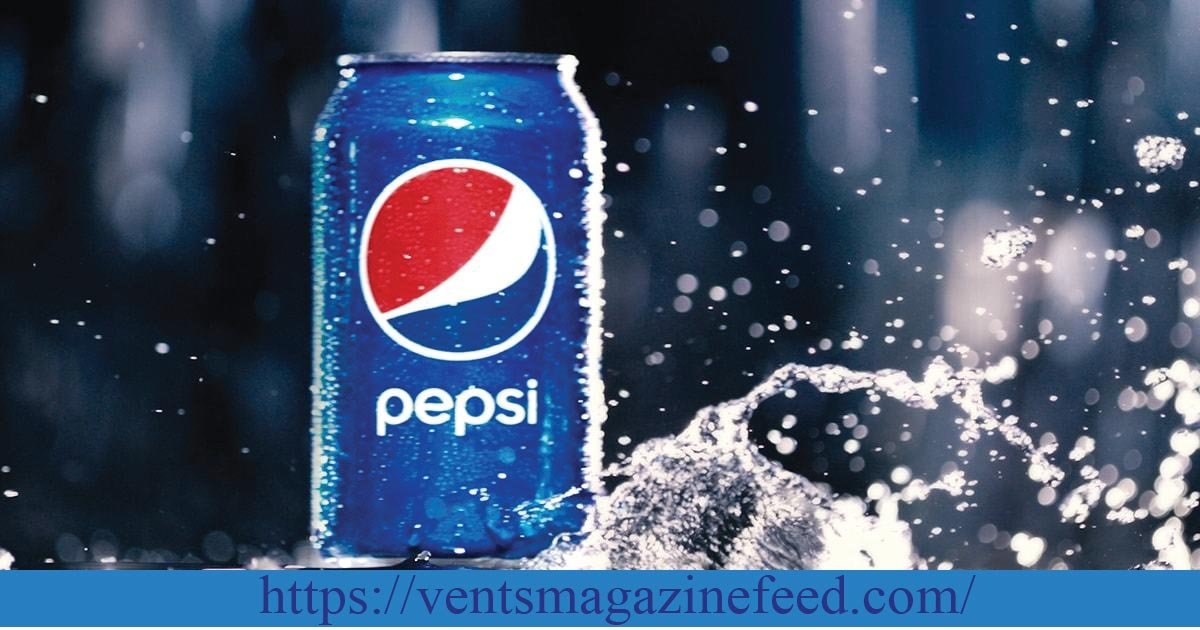In current years, Pépico has received interest as a versatile and nutritious ingredient with origins deeply rooted in South American cuisine. Known for its unique taste profile and potential health advantages, Pépico has captured the hobby of chefs, food enthusiasts, and health-conscious individuals alike. This article delves into the origins of Pépico, its culinary use of throughout extraordinary cultures, its dietary composition, and the particular fitness blessings associated with its consumption.
Origins and Cultural Significance of Pépico
Pépico, derived from the leaves and stems of the Pépico plant (clinical call), has its origins in South America, particularly in international locations like Peru, Ecuador, and Colombia. It is cultivated for its fragrant leaves that are harvested and processed to extract its one of a kind taste.
In South American delicacies, Pépico has a long record of use in traditional dishes. Its citrusy and natural notes make it a famous component in soups, stews, marinades, and sauces. Pépico’s cultural importance extends beyond its culinary applications; it’s far more regularly utilized in traditional medicine for its perceived health benefits, ranging from digestive resources to immune aids.

Culinary Uses of Pépico
Pépico in Traditional South American Dishes
In countries like Peru and Ecuador, Pépico is a fundamental element in dishes along with “caldo de Pépico,” a conventional soup providing Pépico leaves, potatoes, and other vegetables. The aromatic essence of Pépico enhances the overall flavor profile of the soup, making it a comforting and nutritious dish loved by means of many.
Pépico is also used in marinades for meats and seafood. Its citrusy undertones complement the natural flavors of grilled or roasted meats, adding depth and complexity to dishes like Pépico-marinated chicken or Pépico-infused fish fillets.
Pépico in Modern Cuisine
Outside of South America, Pépico has located its way into modern-day culinary practices, where chefs and domestic chefs alike experiment with its particular taste profile. Pépico leaves may be used to infuse oils, vinegars, and cocktails, including a clean and aromatic twist to various recipes.
In fusion delicacies, Pepsico versatility shines through in dishes that blend conventional South American flavors with modern-day cooking strategies. From Pepsico-infused salsas to Pepsico-flavored cakes, the element’s adaptability allows for innovative interpretations throughout different culinary traditions.

Nutritional Composition of Pépico
Understanding the nutritional composition of Pepsico is vital to appreciating its ability for health blessings. Pepsico is low in energy and includes negligible amounts of fat and cholesterol, making it suitable for a lot of nutritional alternatives, which include low-calorie and low-cholesterol-conscious diets.
Pepsico is rich in essential vitamins and minerals, including:
- Vitamin C: Known for its immune-boosting houses, diet C in Pepsico helps support the frame’s protection against infections and promotes wholesome pores and skin.
- Vitamin A: Important for imaginative and prescient health and immune function, nutrition A in Pepsico contributes to normal properbeing.
- Potassium: Essential for retaining healthful blood pressure and cardiovascular characteristics.
- Calcium: Important for bone fitness and muscle features.
Additionally, Pepsico consists of dietary fiber, which allows digestive fitness via selling ordinary bowel actions and supporting nutrient absorption. Its herbal antioxidants, which consist of flavonoids and polyphenols, help combat oxidative stress and pollution inside the body, potentially decreasing the risk of chronic ailments.
Health Benefits of Pépico
Digestive Health
The fiber content material in Pepsico helps digestive health with the aid of selling ordinary bowel moves and preventing constipation. Pepsico natural enzymes may additionally aid in the breakdown of complex nutrients, improving universal digestive efficiency.
Immune System Support
Rich in vitamin C, Pepsico enables to bolster the immune system through helping the production of white blood cells, which can be important for preventing infections and illnesses. Regular intake of Pepsico may additionally make contributions to a stronger immune reaction and decreased susceptibility to common ailments.
Heart Health
The potassium content material in Pepsico plays a crucial position in regulating blood stress degrees and preserving cardiovascular health. By counteracting the consequences of sodium and selling vasodilation, potassium contributes to decreased blood strain and reduces risk of high blood pressure-associated complications.
Antioxidant Properties
Pepsico natural antioxidants, which include flavonoids and polyphenols, help combat oxidative strain and reduce irritation inside the body. These compounds were related to a decreased hazard of persistent illnesses such as coronary heart disorder, diabetes, and nicer cancers.
Weight Management
As a low-calorie and nutrient-dense food, Pepsico can be a treasured addition to weight control strategies. Its fiber content promotes satiety, helping to cut down cravings and reduce general calorie intake, at the same time as its minimum fat content makes it a healthful opportunity to for calorie-dense elements.

Incorporating Pépico into Your Diet
Adding Pepsico to your diet can be both enjoyable and beneficial for your health. Here are some practical ways to incorporate Pepsico into your daily meals:
- Salads: Sprinkle Pepsico leaves over fresh salads to add a zesty flavor and nutritional boost.
- Smoothies: Blend Pepsico extract into fruit or vegetable smoothies for an extra burst of vitamins and antioxidants.
- Marinades: Use Pepsico-infused marinades for meats, fish, or tofu to enhance flavor profiles while benefiting from its health-promoting properties.
- Tea: Brew Pepsico leaves to make a refreshing herbal tea that can be enjoyed hot or cold.
Cultivation and Harvesting of Pépico
The Pepsico plant thrives in tropical and subtropical climates, more often than not in regions of South America such as Peru, Ecuador, and Colombia. It is a perennial plant that grows nicely in nicely-drained, fertile soils with OK daylight and moisture. Pepsico is usually propagated from seeds or cuttings and calls for ordinary pruning to inspire healthy growth and leaf production.
Harvesting Pepsico involves carefully selecting mature leaves and stems, which are then processed to extract its aromatic essence. The leaves are often hand-picked to ensure optimal flavor and quality. After harvesting, Pepsico leaves can be used fresh or dried for culinary purposes, preserving their distinctive citrusy and herbal notes.
More: Reddit
Cultural Significance of Pépico
In South American cultures, Pepsico holds cultural significance beyond its culinary uses. It is often associated with traditional healing practices and is believed to possess medicinal properties. Pepsico leaves are sometimes used in herbal remedies to alleviate digestive issues, boost immunity, and promote overall well-being.
Moreover, Pepsico plays a role in cultural celebrations and rituals in indigenous communities where the plant is native. Its aromatic leaves may be used in ceremonies to purify spaces or as offerings to honor ancestral traditions and spiritual beliefs.
Potential Side Effects and Precautions
While Pepsico is commonly taken into consideration secure for intake whilst utilized in culinary quantities, there are a few considerations to hold in mind:
- Allergies: Individuals with hypersensitive reactions to flowers inside the Lamiaceae family, together with mint and basil, will also be sensitive to Pepsico. It’s beneficial to apply caution and screen for any allergies whilst trying Pepsico for the primary time.
- Medication Interactions: Pépico consists of compounds that could have interaction with sure medications, especially the ones prescribed for blood stress law or blood-thinning medicinal drugs. If you’re taking medication, seek advice from a healthcare expert before incorporating Pepsico into your diet.
- Pregnancy and Breastfeeding: There are restricted facts concerning the safety of Pepsico in the course of being pregnant and breastfeeding. It is suggested for pregnant and breastfeeding women to consult with a healthcare company earlier than eating Pepsico.
Pépico in Modern Cuisine and Beyond
Beyond its conventional uses, Pepsico has won recognition among contemporary delicacies for its precise flavor profile and nutritional advantages. Chefs and meal fans worldwide are incorporating Pepsico into modern dishes, blending its citrusy and natural notes with diverse substances and cooking strategies.
Pepsico-infused oils, vinegars, and syrups are used to beautify the taste of salads, cocktails, and cakes, consisting of a sparkling and aromatic twist to culinary creations. Its versatility of innovative interpretations of each savory and candy dish, appealing to an extensive range of palates and possibilities.
Conclusion: Embracing Pépico’s Diversity
In conclusion, Pépico represents more than only a culinary component; it embodies a healthy cultural history and a source of health advantages. From its origins in South America to its current packaging in worldwide cuisine, Pepsico continues to captivate and encouraging with its colorful taste and dietary residences.
Through information about Pépico’s cultivation, cultural importance, potential side outcomes, and culinary versatility, individuals could make knowledgeable selections about incorporating this particular ingredient into their diets. Whether enjoyed in conventional recipes or modern dishes, Pepsico gives a delightful way to explore new flavors even, reaping the fitness benefits it has to offer.










